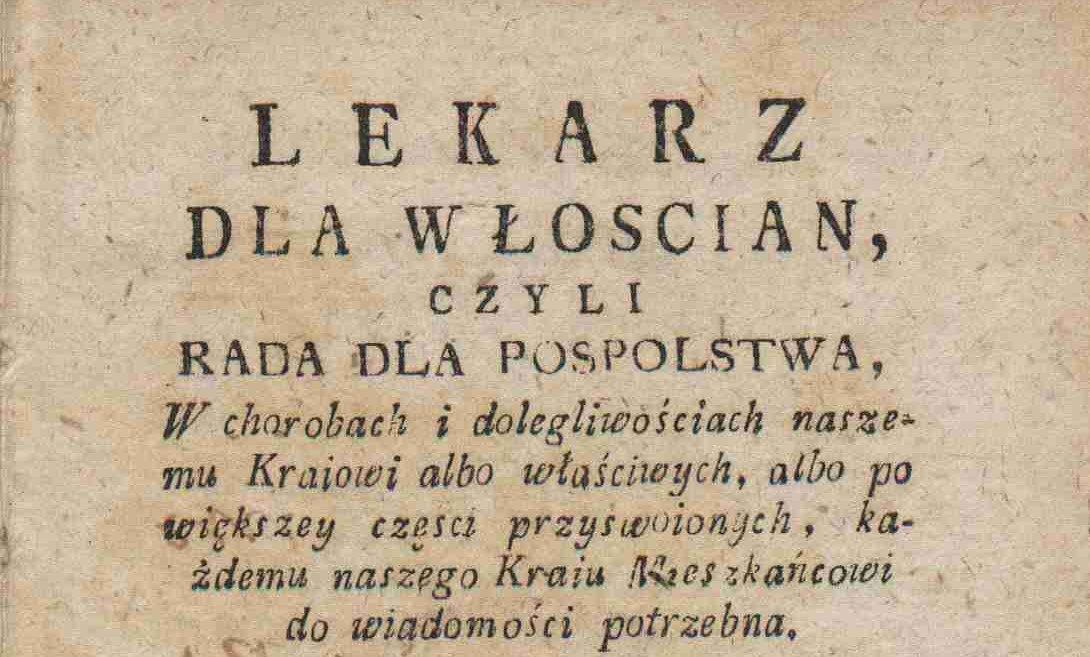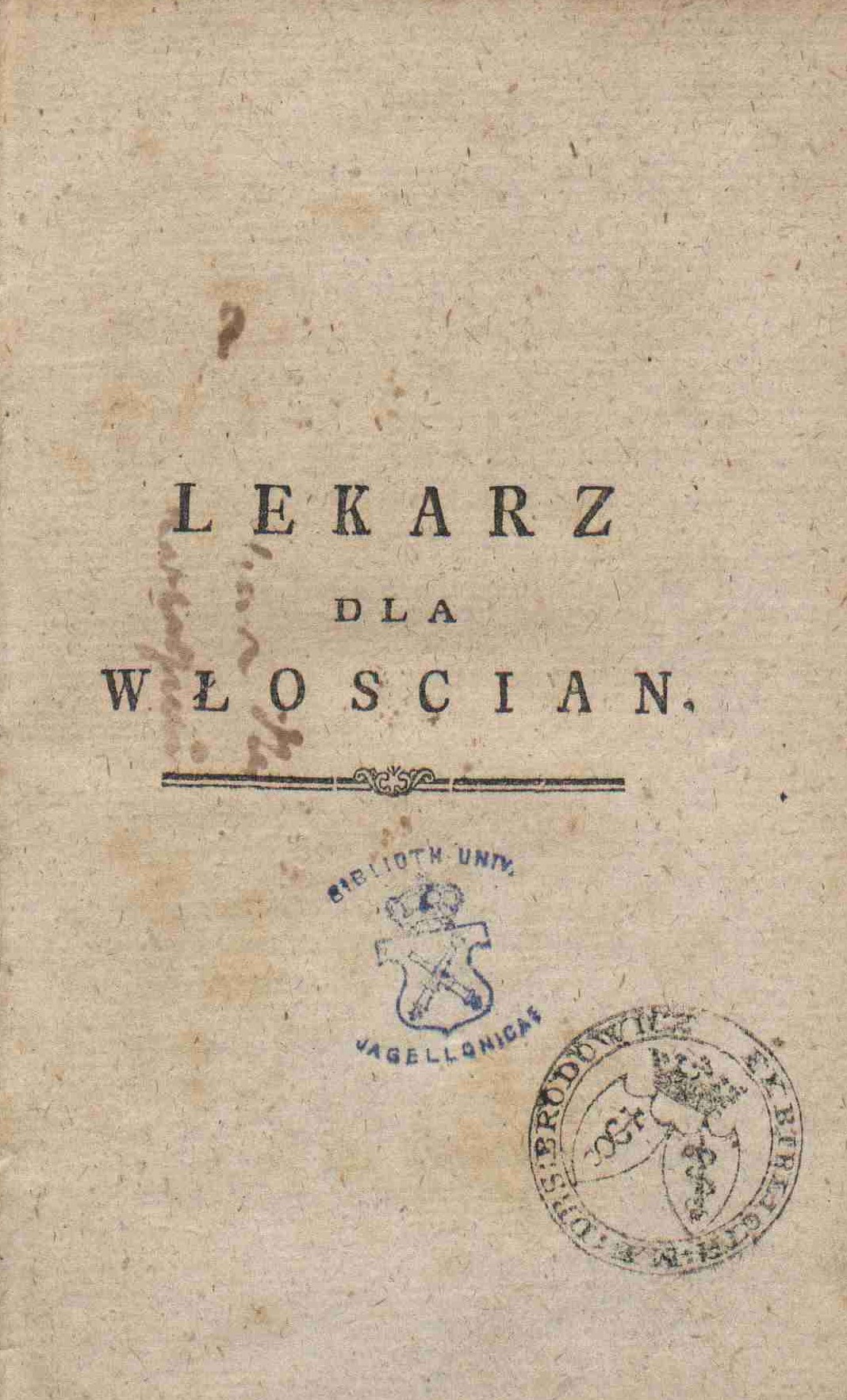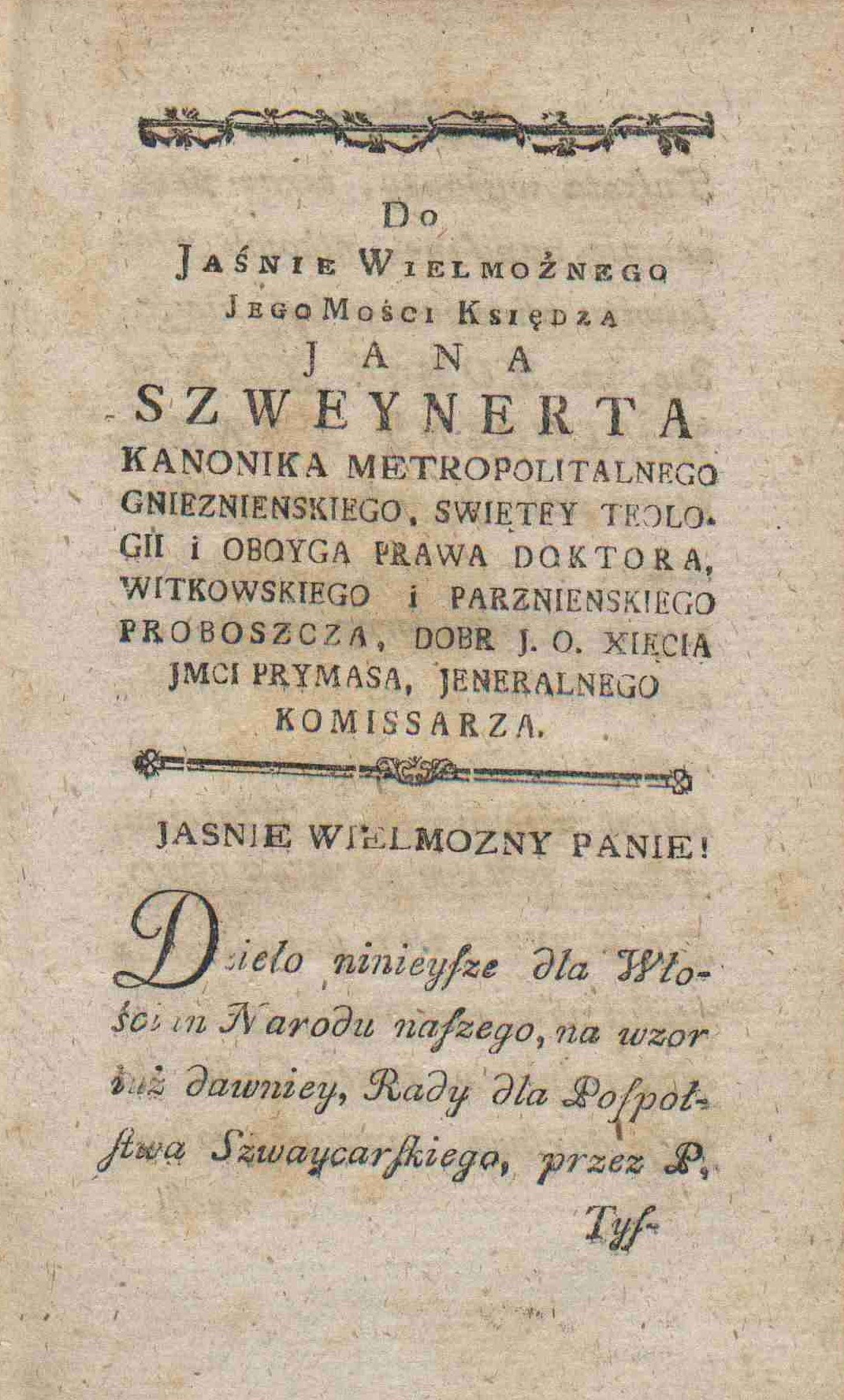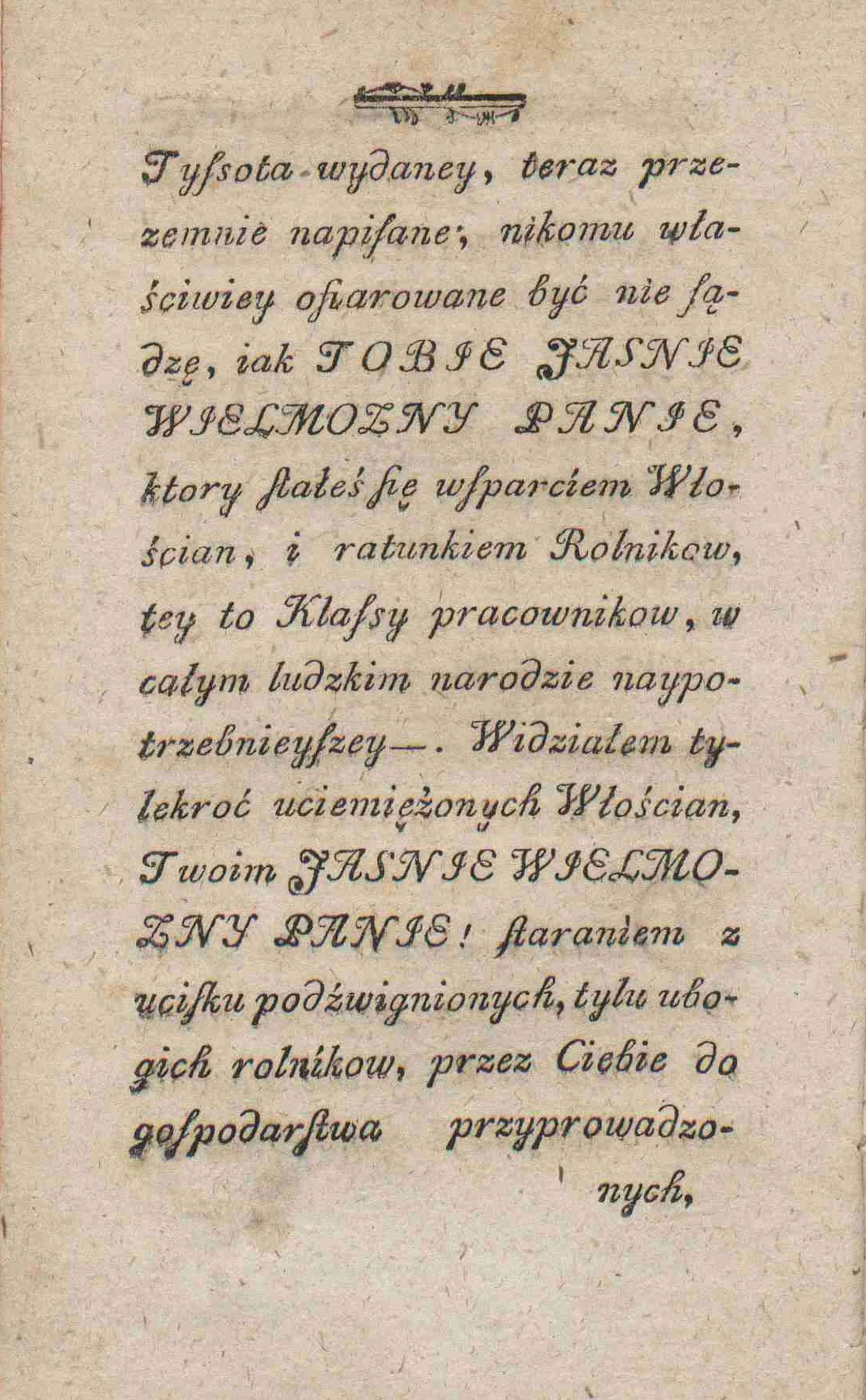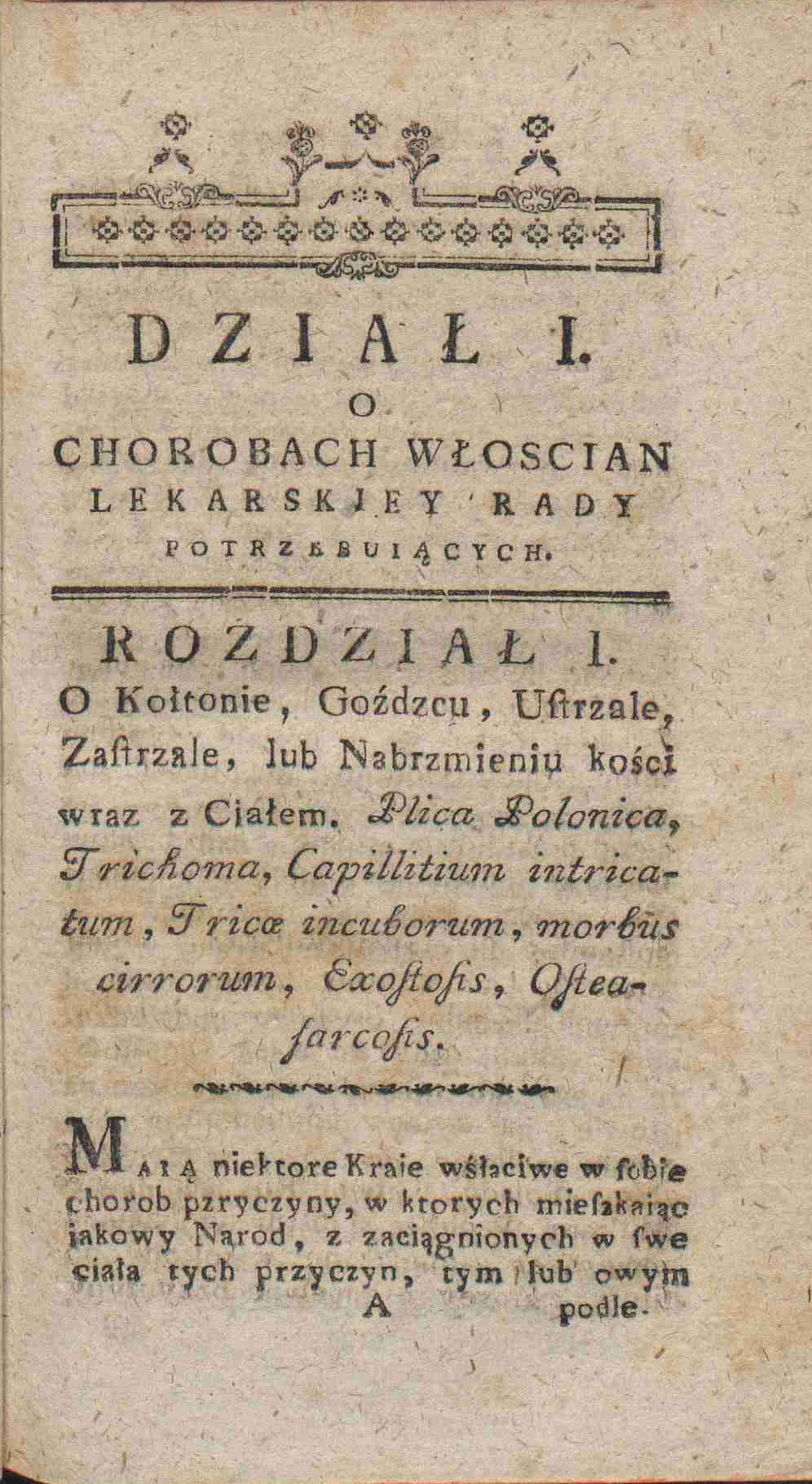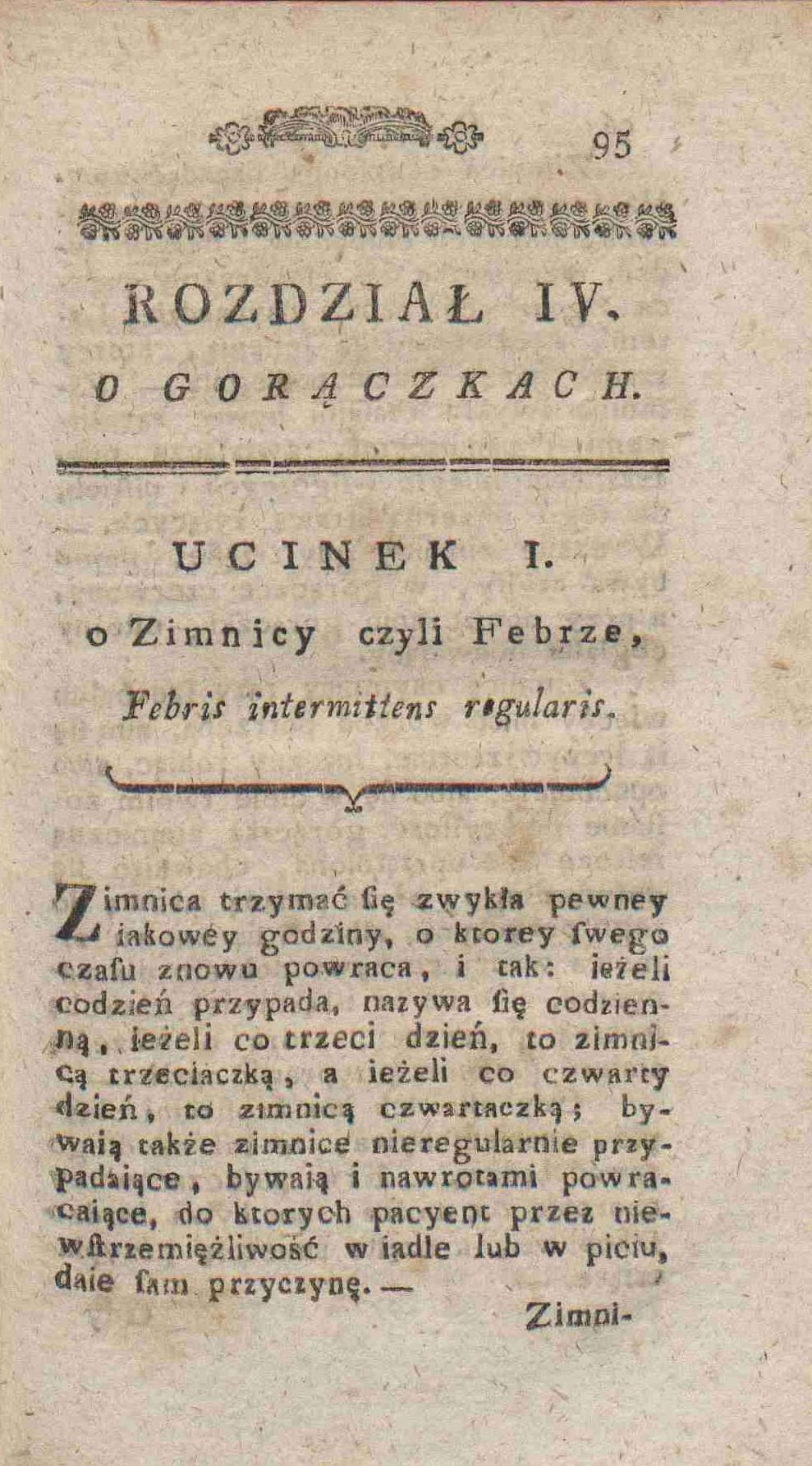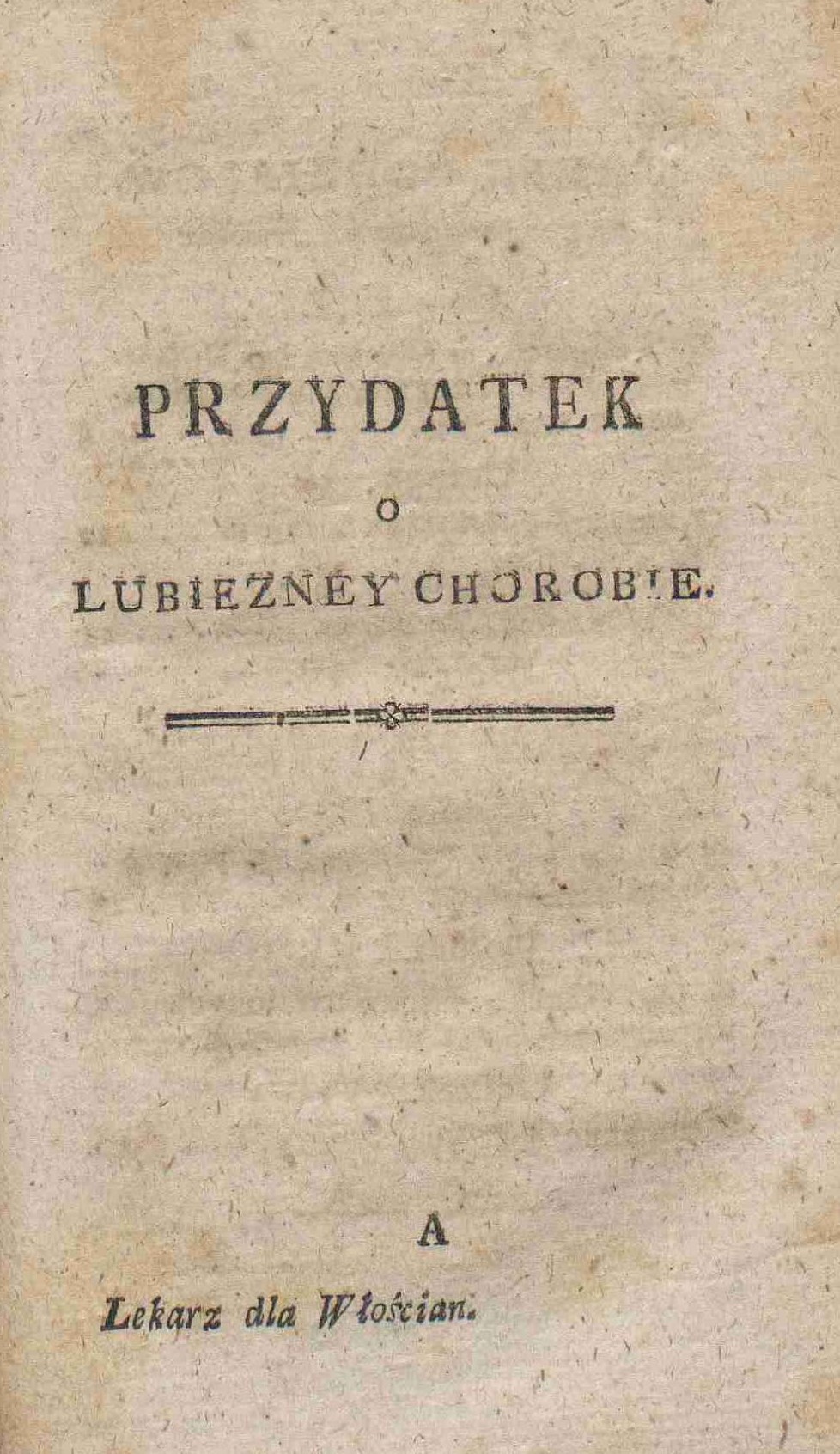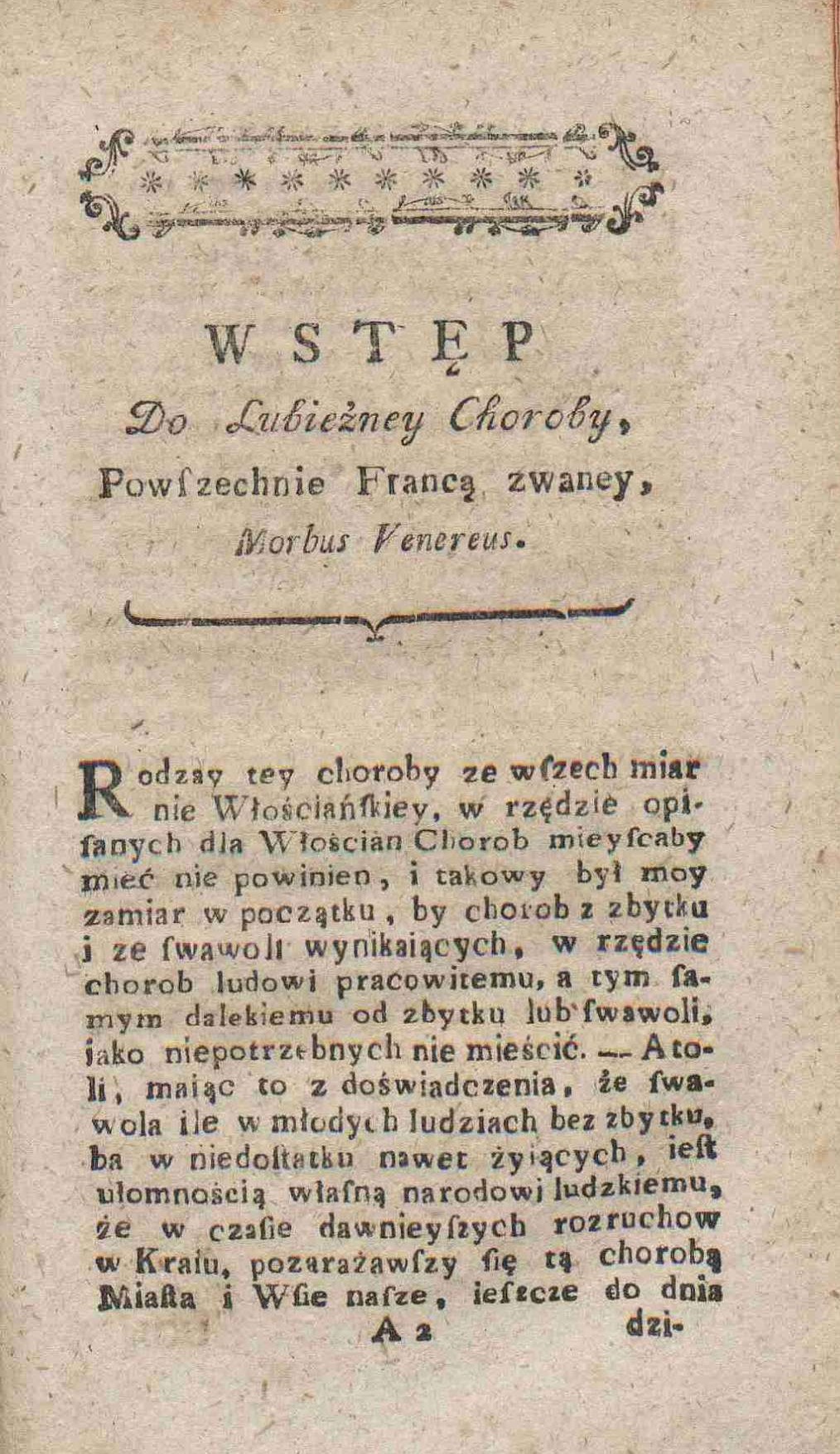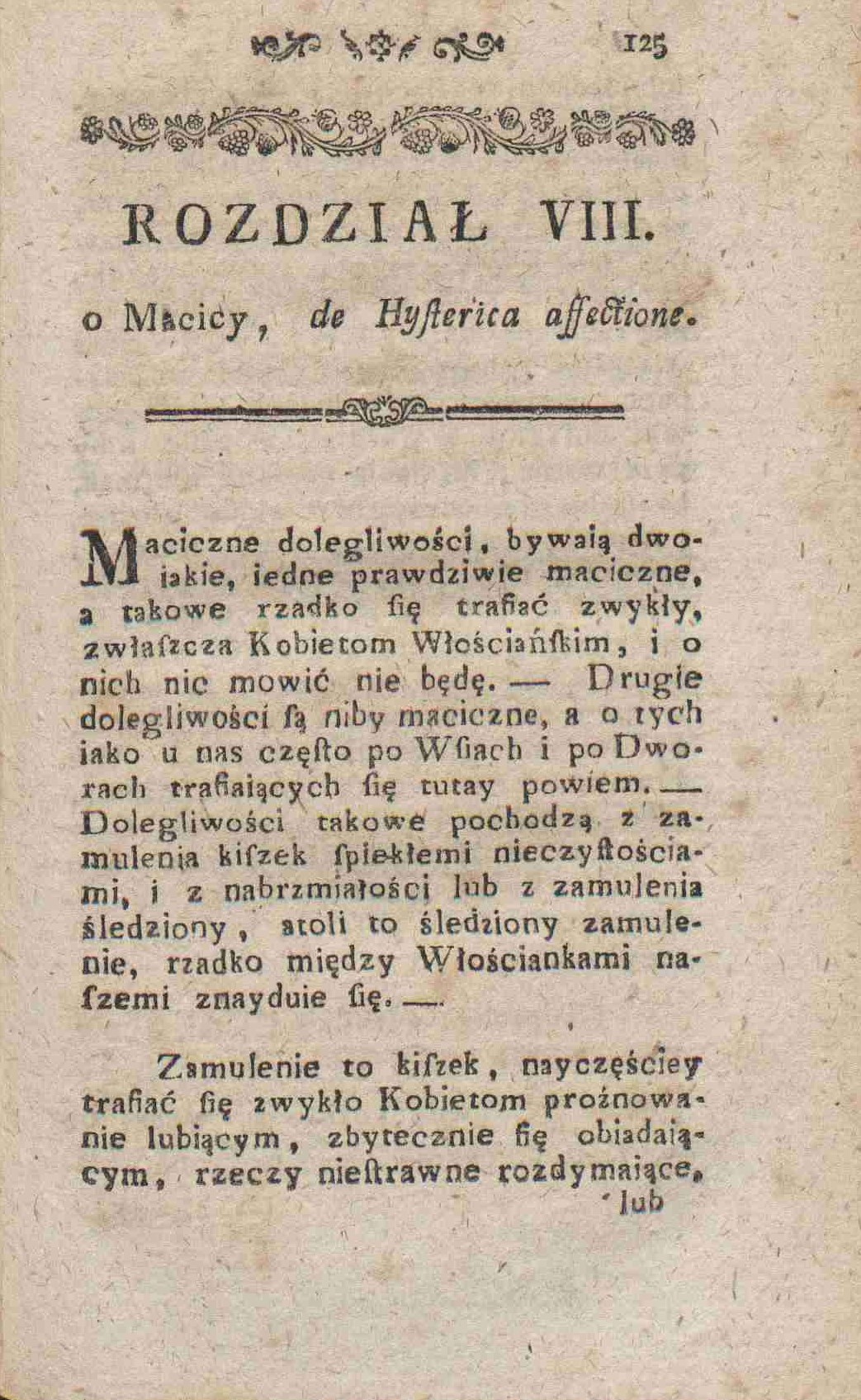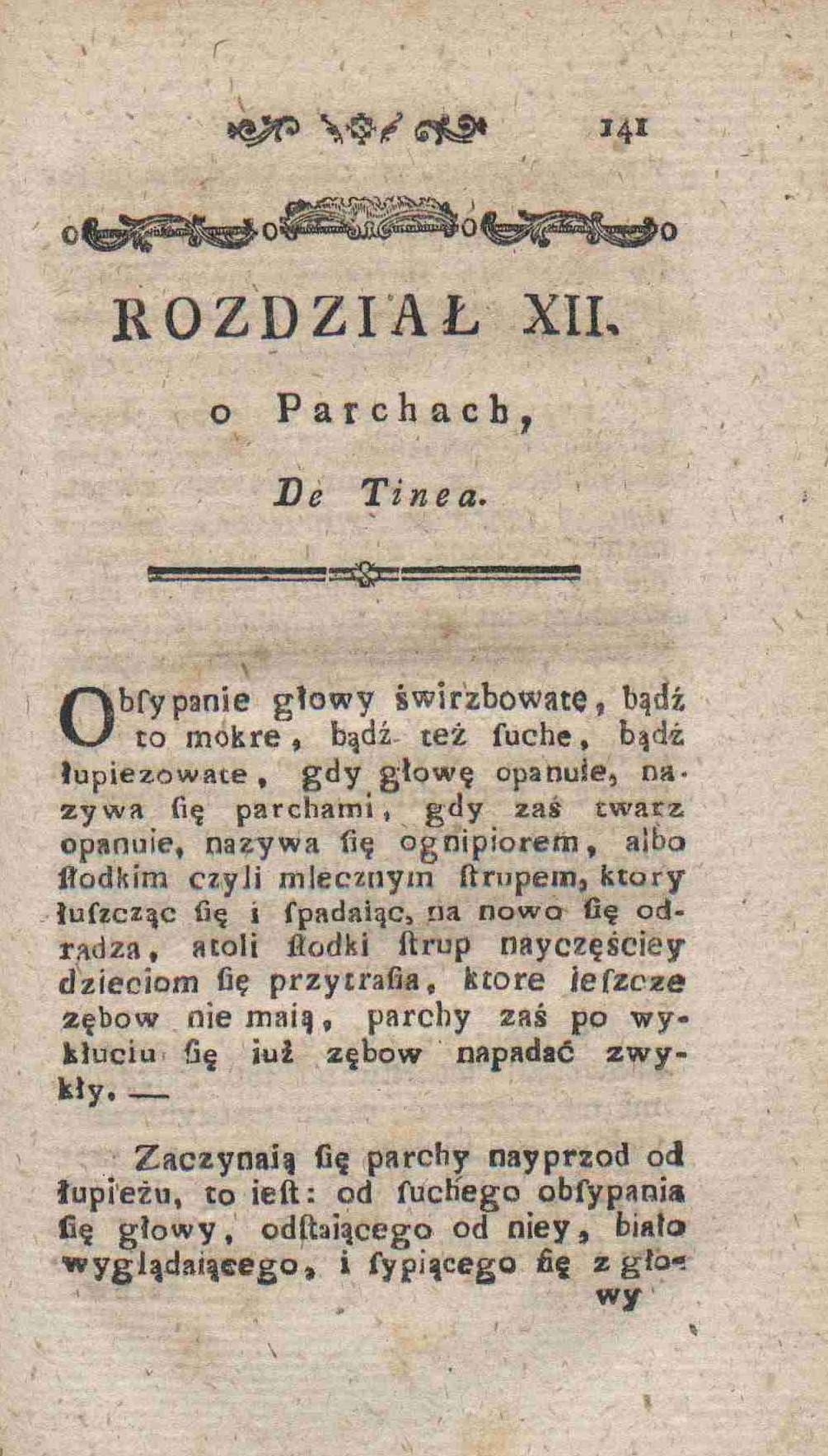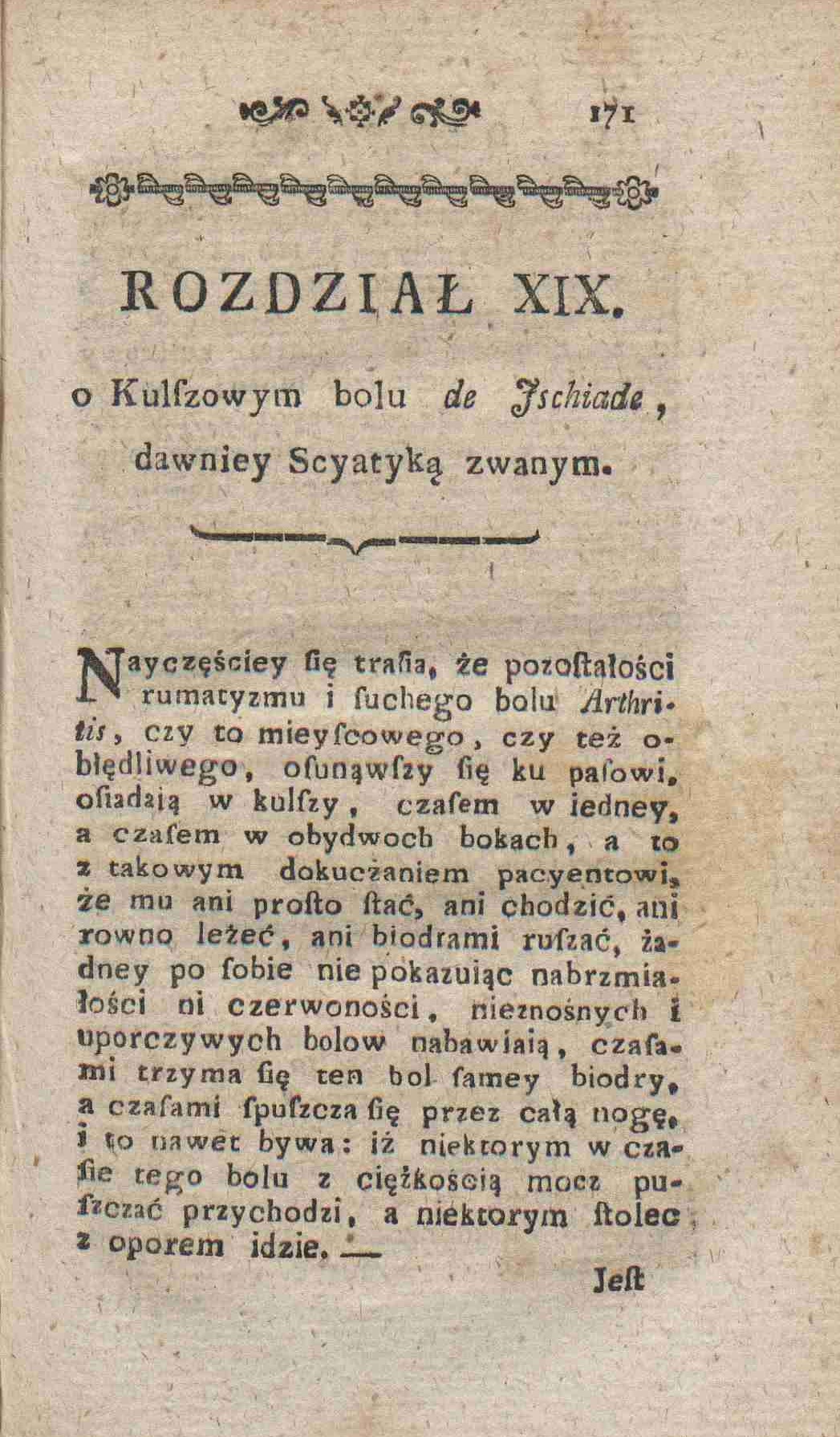There are two valuable collections in the library's collection: old prints (828 volumes from the 16th-18th centuries) and 19th-century polonica (about 8200 volumes), which make up the National Library Resource. Here we would like to present to you the most interesting and valuable collections that the library has in its collection. We also invite you to visit the Library of the NIKIDW Branch in Pulawy, where readers can directly acquaint themselves with selected titles.
***
Perzyna, Ludwik
"Lekarz dla włoscian czyli Rada dla pospolstwa w chorobach i dolegliwościach ... każdemu ... do wiadomości potrzebna"
Kalisz, 1793
The history of medicine dates back to Mesopotamia, ancient Egypt, Rome and Greece. Its precursor is considered to be Hippocrates, who claimed that in "the practice of medicine two principles should be honored: to help or at least not to harm." Initially, treating people was done by shamans and priests. Many years passed before the medical profession emerged.
W zasobach Biblioteki Narodowego Instytutu Kultury i Dziedzictwa Wsi można znaleźć wiele ciekawych publikacji poświęconych medycynie, jednak na szczególną uwagę zasługuje jedno z najcenniejszych dzieł – pochodząca z 1793 roku praca „Lekarz dla włoscian czyli Rada dla pospolstwa: w chorobach i dolegliwościach … każdemu … do wiadomości potrzebna przez b. Ludwika Perzyne … w narodowym języku napisana …. W Kaliszu”.
In the 18th century, superstition and folk rituals reigned supreme over medicine among the rural population living in Poland. Treatment could have a variety of effects, though unfortunately it most often only worsened the patient's condition.
One of the scientists who set himself the goal of improving the level of medical knowledge of the people was Ludwik Perzyna, a Polish physician, a monk of the Congregation of St. John of God, a pioneer of modern methods of diagnosis and therapy, a tireless promoter of the principles of hygiene, prevention and treatment. He was gifted with extraordinary literary and linguistic talent. He used correct and rich Polish, he also proposed many Polish equivalents of Latin expressions and was considered by many to be the co-creator of Polish medical terminology. His literary output consists mostly of books on medicine and, to a lesser extent, religion.
As a source of knowledge, he used, on the one hand, his long medical practice and, on the other hand, a thorough analysis of the works of other medical men, both domestic and foreign. One of them was the Swiss physician Samuel Auguste André David Tissot, who inspired Louis Perzine to work on popularizing medical knowledge among the low strata of society. The result of these activities was the publication of the work "A doctor for the peasants, or a council for the commoners ...". The book aimed to improve general health and fight against bad medical practices used in the villages.
In the introduction, the author addressed the metropolitan canon Jan Szeynert, writing: "This work for the Vlachs of our Nation, on the model of the former Council for the Shwaycar People, published by P. Tyssot, now written by me, I do not think to be properly offered to anyone, but to YOU, THE MIGHTY LORD, who became the support of the Vlachs and the rescue of the Farmers, this class of workers, in the whole human nation most necessary."
In its content, the doctor stressed the need for moderation in eating and drinking, and recommended healthy exercise and hygiene. He also placed great emphasis on stopping paramedical practices commonly used among peasants, saying that the profession of doctor or apothecary should be practiced only by appropriately educated people. He also promoted a way of thinking "without imagination," based on facts and research instead of beliefs and folk messages. If there was no doctor in the area, he suggested that the local parish purchase his work. In this way, a priest who could read could pass on the knowledge contained in it to the needy faithful.
The first chapter of "A Physician for the Vlachs..." is devoted to combating knots. In this case, the author recommended more frequent bathing, even once a week, and systematic combing of the hair. He based his advice on observation among wealthier Muscovites and Jews, who bathed every Friday, the quilt was the least frequent.
Louis Perzyna also promoted humane treatment of the mentally ill in accordance with Christian ethics (he even created a separate classification of these diseases, in which we find, for example, "smutnodur" as a term for melancholy), as well as education for all segments of society.
Considered the best medical work of Ludwik Perzyna, the book "A Physician for the Vlachs" is 391 pages long and includes a 17-page appendix "On lewd disease," or venereal diseases. The 29 chapters of the first part and 5 chapters of the second part contain extensive knowledge on virtually all fields of medicine.
The first part collects chapters on quiver, fevers, with a subsection on diarrhea, jaundice, dropsy, light and bloody diarrhea, uterus, stopped monthly cleansing, knot and cancer, scabies, rabid dog bites, headaches, shortness of breath and breathlessness, drunkenness or bathing and other ailments, among others.
Part two on surgical procedures includes chapters on inflammation, wounds, broken bones, bones knocked out of joint, patches and ointments.
In a separate chapter , "On the defect of passing," the author characterized mental disorders. He described their symptoms, course and methods of treatment. It consists of five subsections (sections): "On foolishness and insanity of thought", "On smutnodura", "On insanity", "On possession", "On witchcraft, sorcery, on spells, deeds, charms, and enchantments".
A medical compendium such as "A doctor for the landowners..." can successfully serve as a source on general medical knowledge of the late 18th century. Written by a Pole and in Polish, the book is undoubtedly a valuable textbook for the study of medicine. Ludwik Perzyna sums up medical knowledge by saying that the organism is like a string, which is brought out of its position of equilibrium by disease. The organism, just like a string, tugging at itself and expelling various poisons, tries to return to health. "A curative doctor using various medicines tries to help, but often he himself does not know what contributed to the patient's recovery. Nature itself very often helps with its actions."
Elaborated. Boguslaw Wisniewski
Editor. Joanna Radziewicz
Photo polona.pl - public domain
